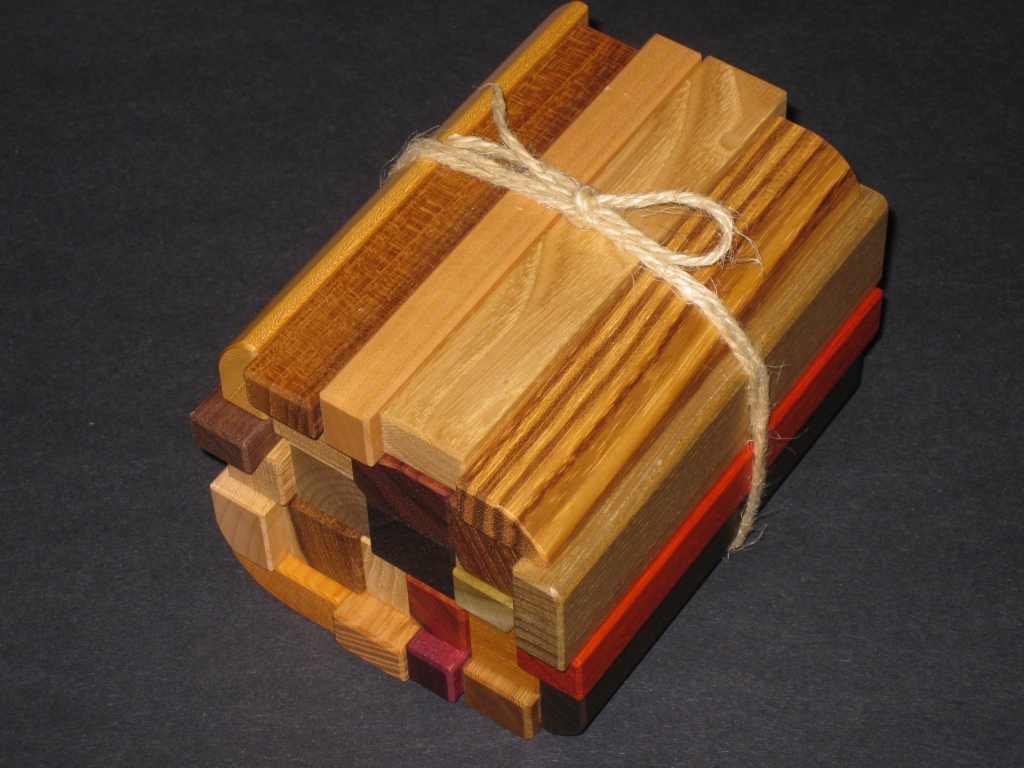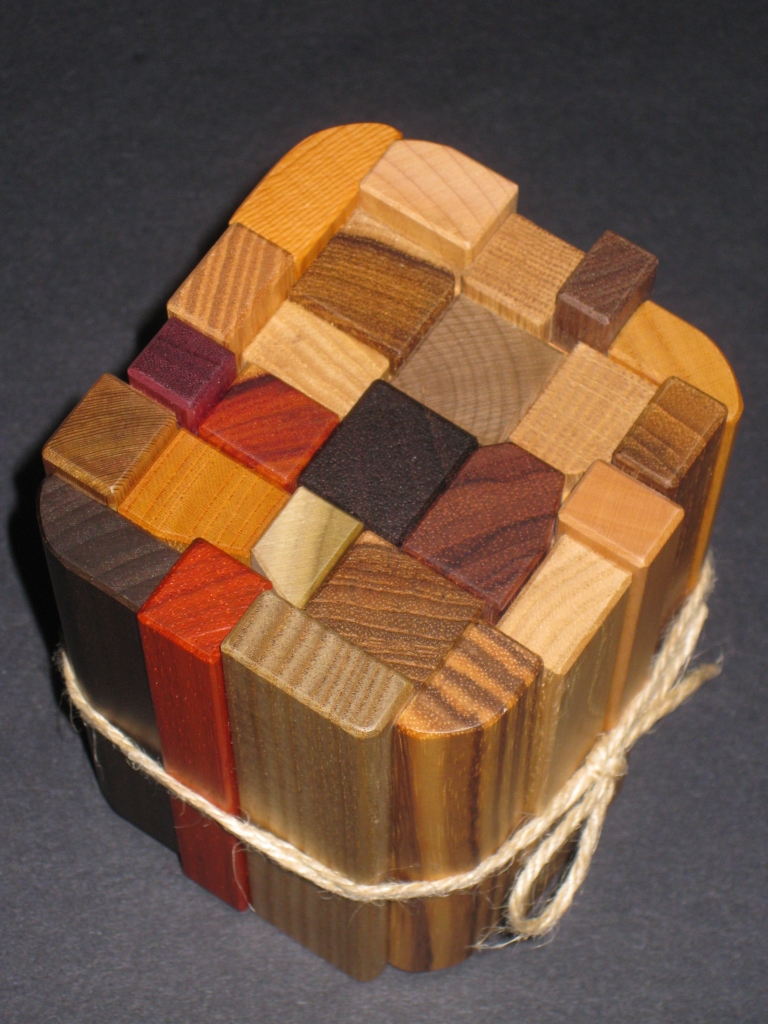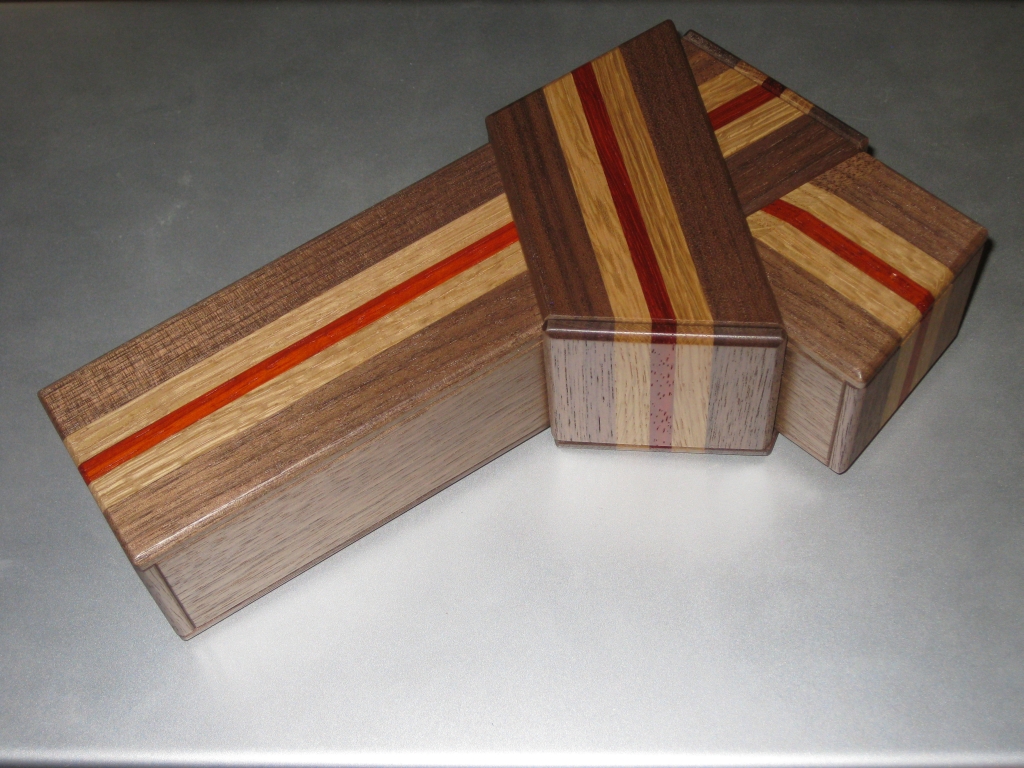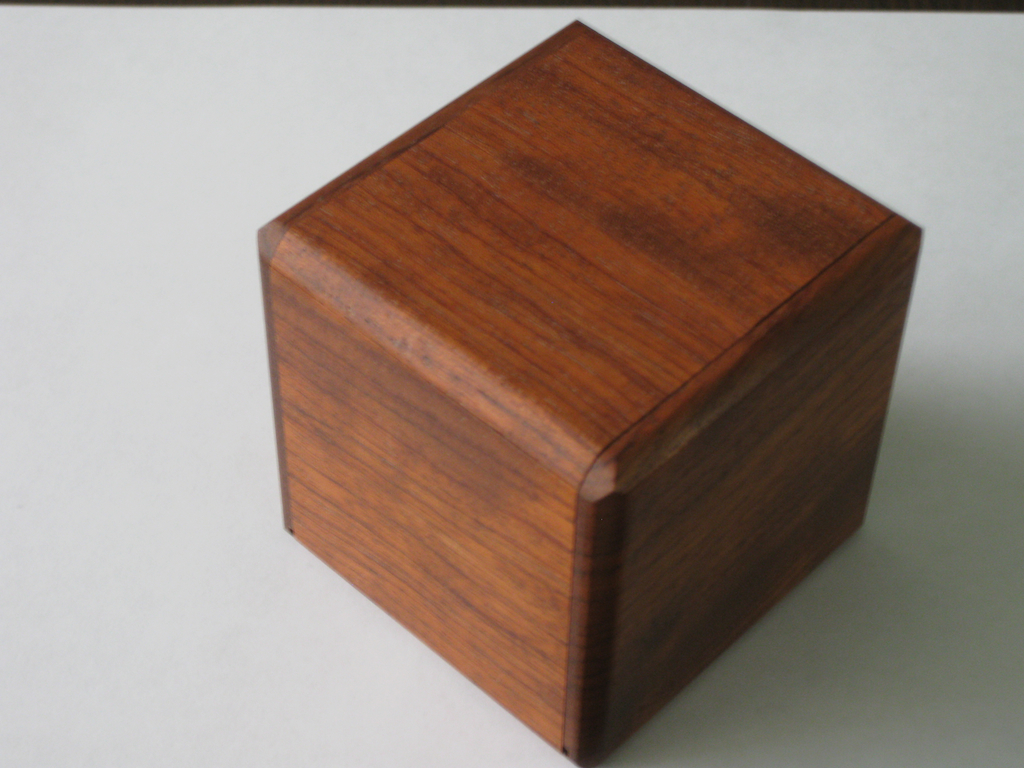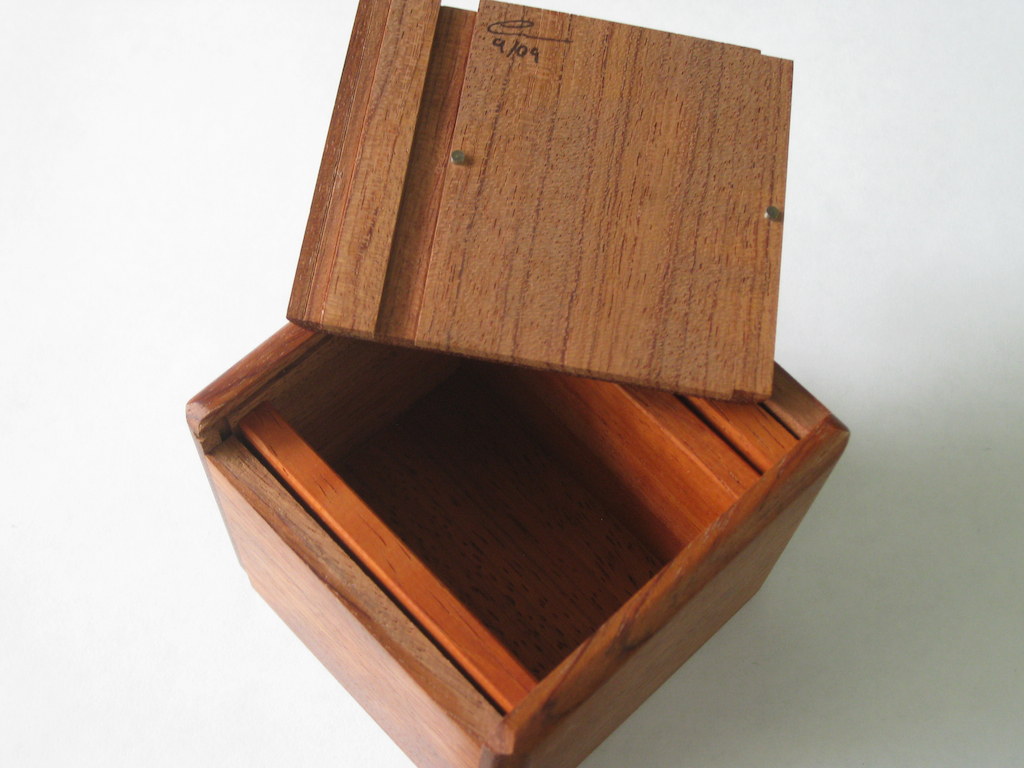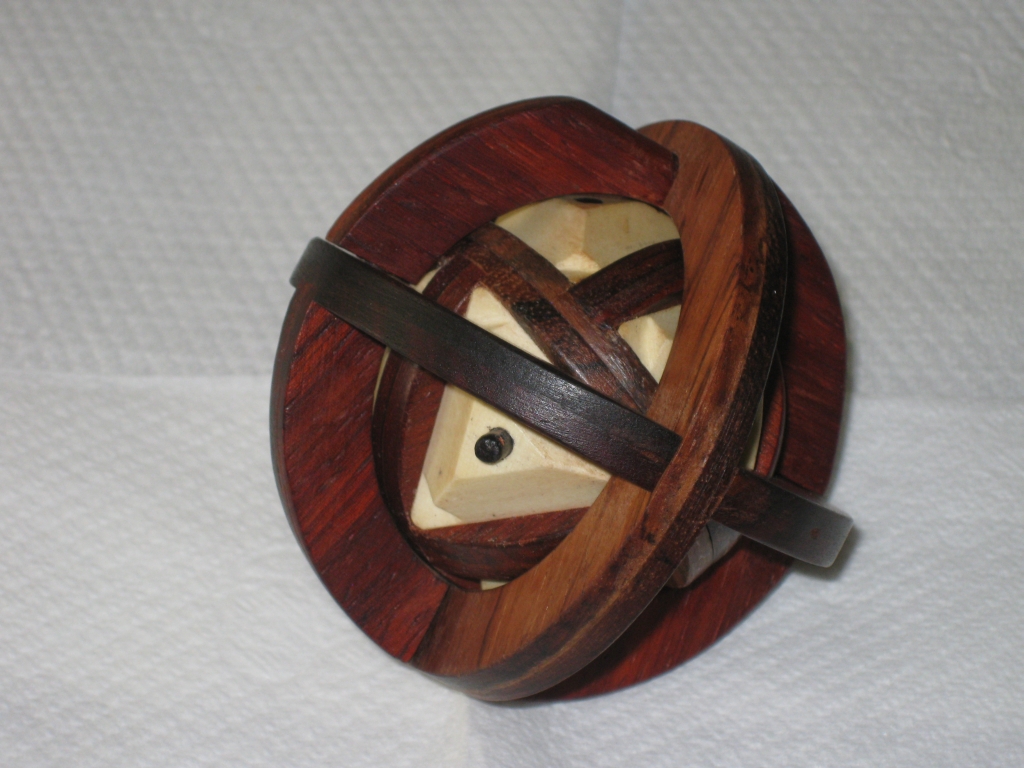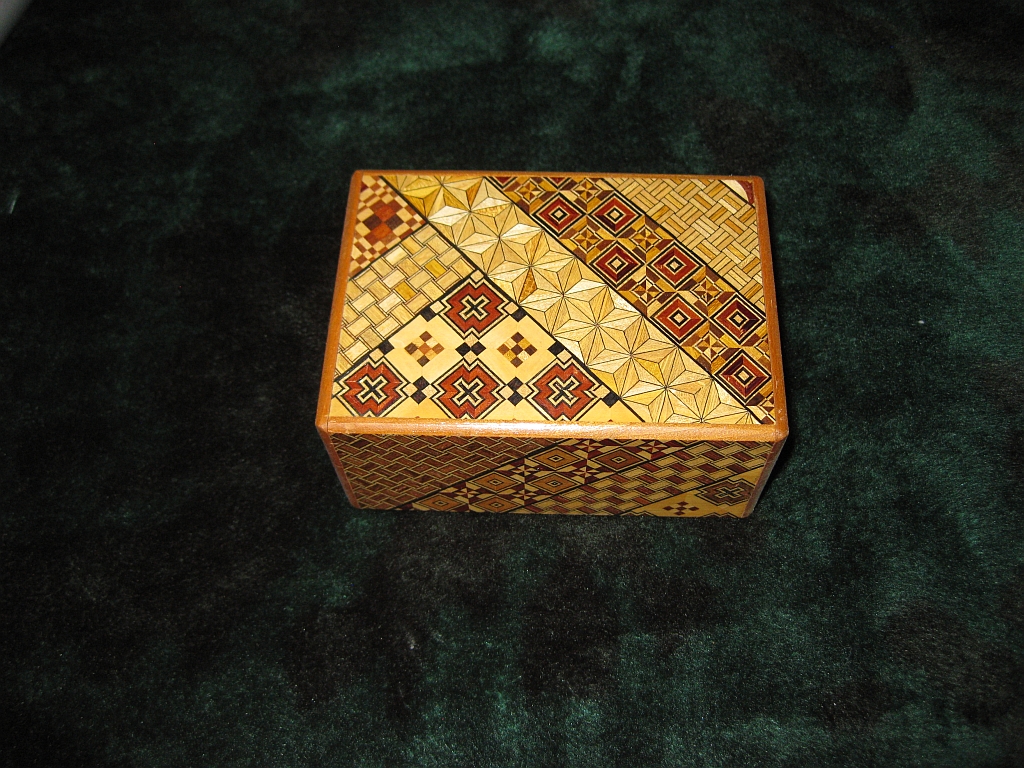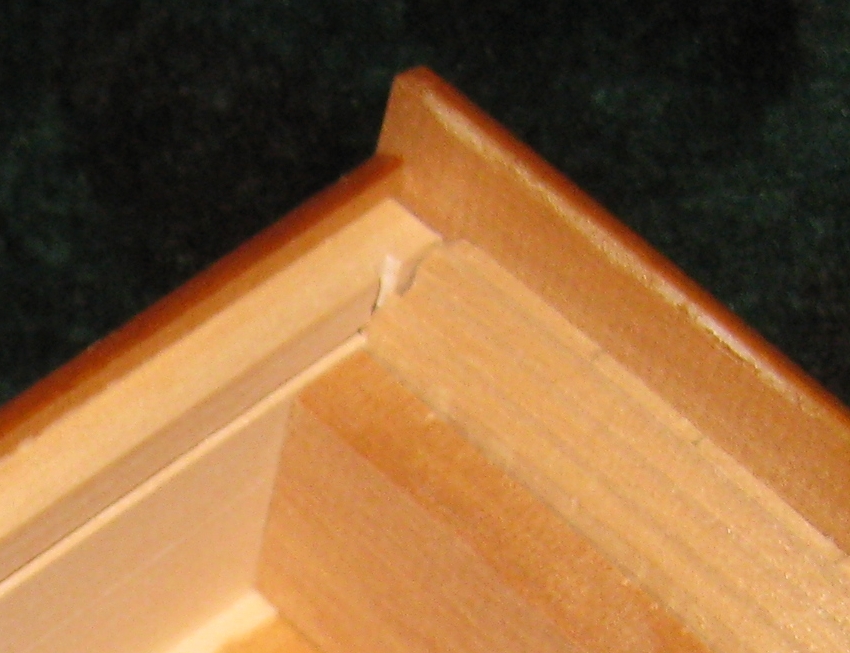Firewood by Hiroshi Iwahara is another beautiful looking puzzle box available from the Karakuri Creation group. Living up to its name, this pile of sticks made from a number of exotic woods really does look like a bundle of firewood, wrapped with string ready to be sold.
The puzzle was designed for an exhibition with a “forest” theme. Created in April 2011 this is the newest box from Iwahara(at the time of writing), and is a really cute box. It’s not the largest puzzle box out there, but is still a pretty good size at 5″x 4″x3.75″. Sitting in your hand, the puzzle feels good, the rounding of each firewood log makes it very tactile, and you find yourself turning it round and round. Now this may be because you can’t find out how to open it, as none of the logs in the centre of the puzzle seem to move and the outer logs are all glued together.
With over 10 hardwoods used in the puzzle, there’s a great array of colours and textures, making this a real feast for the eyes. I know that at the very least there’s Katsura, Oak, Rosewood, Zebrawood, Purpleheart, Bloodwood, Bubinga, Cherry, Black Ebony (big guess on the ebony) and Maple in there, based on my limited ability to identify woods from visual inspection. (Note: I may be entirely wrong, as there’s no conformation from the Karakuri group on this, so it’s all a guess)
I spent around 10 minutes poking and prodding the logs on this box before I found the trick, and the drawer popped open rather satisfyingly. It’s not the most challenging puzzle box out there, but it does exude a charm which is hard to pass up. The ‘lock’ really is incredibly simple, and it makes me smile each time I close it, with the drawer pulling itself back into place, then pop it back out with the trick. Very simple, but hugely satisfying.
